Building architecture style refers to a distinctive and recognizable set of characteristics, design principles, and aesthetic features that define a particular period, region, culture, or movement in architecture. Architectural styles are influenced by various factors such as historical, cultural, social, technological, and environmental contexts.
Architectural styles can vary greatly across different time periods and geographic locations, reflecting the evolving tastes, values, and advancements in construction techniques. Each style has its own unique elements, including the overall form, building materials, structural systems, ornamentation, and spatial organization.
Some well-known architectural styles include:
EGYPTIAN ARCHITECTURE STYLE
Egyptian architecture style refers to the distinctive architectural principles and design elements that were prevalent in ancient Egypt. It developed over a span of several thousand years, with key characteristics remaining consistent throughout the civilization’s history. Here are the defining features of Egyptian architecture style:
1. Monumental Scale: Egyptian architecture is known for its grandiose scale, with structures constructed on a monumental level. The most iconic examples include the Great Pyramids of Giza, which were built as tombs for pharaohs.

2. Symmetry and Balance: Egyptian architecture is characterized by a strong emphasis on symmetry and balance. Buildings and structures are often organized around a central axis, with elements mirroring each other to create a harmonious composition.

3. Massive Stone Construction: Ancient Egyptians employed massive stone construction techniques, primarily using limestone and granite. These stones were carefully cut and meticulously fitted together to create solid and enduring structures.

4. Columnar Architecture: Columns were an integral part of Egyptian architecture, particularly in temples and monumental structures. They were typically square or rectangular in shape and featured intricate and detailed carvings.

5. Hieroglyphic Decoration: Egyptian architecture often incorporated decorative elements in the form of hieroglyphs, which were intricate symbols used in ancient Egyptian writing. Hieroglyphs were carved or painted onto walls, pillars, and lintels, often depicting religious or historical scenes.

6. Pylon Gateways: Many Egyptian temples featured monumental gateways known as pylon gateways. These massive structures were characterized by sloping walls and a central doorway, often adorned with elaborate carvings and statues.

7. Mortuary Temples and Tombs: Egyptian architecture prominently featured mortuary temples and tombs, which were built as eternal resting places for pharaohs and members of the royal family. The temples served as a place of worship and commemoration.

8. Sunken Relief Carvings: Egyptian architecture utilized a unique carving technique known as sunken relief. This involved carving hieroglyphs and figures into stone surfaces, which were then filled with paint or plaster to create a contrasting effect.

9. Clerestory Windows: Egyptian temples often incorporated clerestory windows, which were narrow, high-level windows positioned along the upper part of the walls. These windows allowed natural light to enter the interior spaces.

10. Obelisks: Obelisks, tall, slender, four-sided stone pillars, were a distinct feature of Egyptian architecture. They were often placed in pairs in front of temples or as standalone monuments, adorned with hieroglyphic inscriptions.

Egyptian architecture style was deeply influenced by the religious beliefs, funerary practices, and political power structures of ancient Egypt. It left a lasting legacy and continues to inspire and captivate people around the world with its majestic and timeless appeal.
MAK ARCHITECTS ALSO DESIGNED A FACTORY BUILDING & WAREHOUSE ON EGYPTIAN ARCHITECTURE STYLE
In conclusion, Egyptian architecture style is renowned for its monumental scale, symmetry and balance, massive stone construction, columnar structures, hieroglyphic decorations, pylon gateways, mortuary temples and tombs, sunken relief carvings, clerestory windows, and obelisks. These defining features, shaped by religious beliefs, funerary practices, and political power structures, created a distinctive architectural legacy that continues to awe and inspire people today. The grandeur and timeless appeal of Egyptian architecture serve as a testament to the ingenuity and craftsmanship of the ancient Egyptians, leaving an indelible mark on the history of architecture.
CLASSICAL ARCHITECTURE STYLE
Classical Architecture: Inspired by the architecture of ancient Greece and Rome, characterized by symmetrical proportions, columned facades, pediments, and classical orders such as Doric, Ionic, and Corinthian.
Classical architecture style refers to the architectural principles, design elements, and building techniques derived from ancient Greek and Roman civilizations. It flourished during the classical periods of these civilizations and has had a profound influence on Western architecture. Here are the key features of classical architecture style:
1. Symmetry and Proportion: Classical architecture places great importance on symmetry and proportion. Buildings are typically organized around a central axis, with elements mirroring each other to create a balanced and harmonious composition.
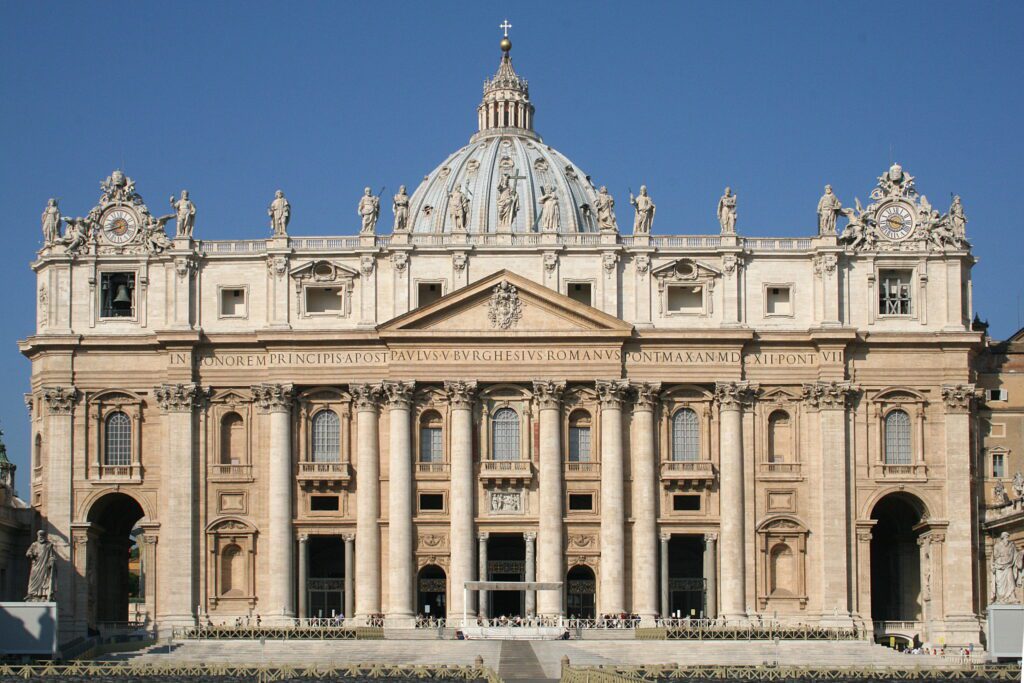
2. Classical Orders: Classical architecture employs three main orders: Doric, Ionic, and Corinthian. These orders consist of a system of columns and entablatures, each with its own distinct proportions, ornamentation, and aesthetic character.
– Doric Order: The Doric order is the simplest and most austere, characterized by sturdy, fluted columns without a base and a plain, cushion-like capital.

– Ionic Order: The Ionic order features slender, fluted columns with distinctive scrolled volutes as capitals. It is considered more delicate and ornate than the Doric order.
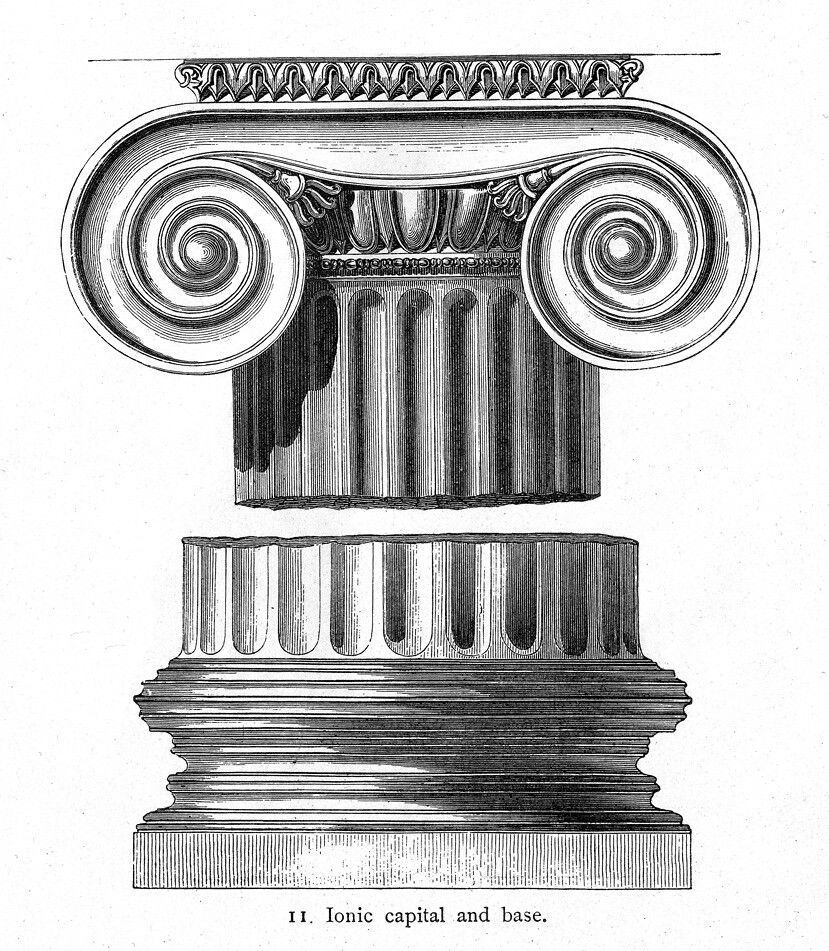
– Corinthian Order: The Corinthian order is the most ornate of the three, with columns adorned by elaborate leafy capitals, often resembling acanthus leaves.
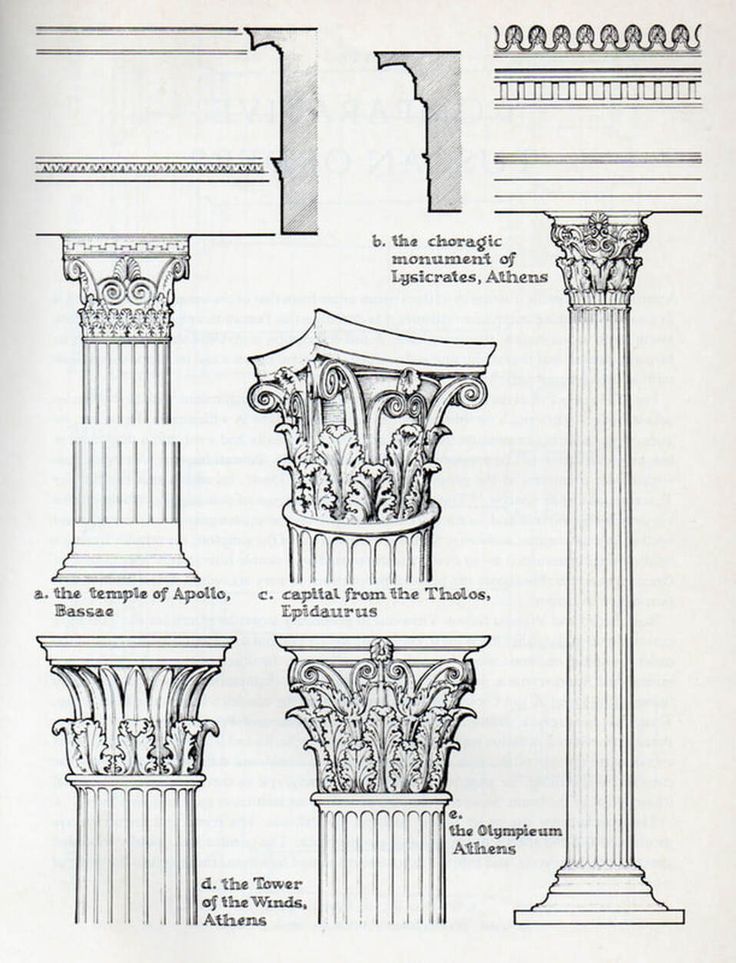
3. Pediments and Entablatures: Classical architecture incorporates pediments and entablatures as prominent elements. Pediments are triangular-shaped structures that sit atop the columns and feature decorative sculptures or reliefs. Entablatures consist of horizontal bands (architrave, frieze, and cornice) that rest on the columns.
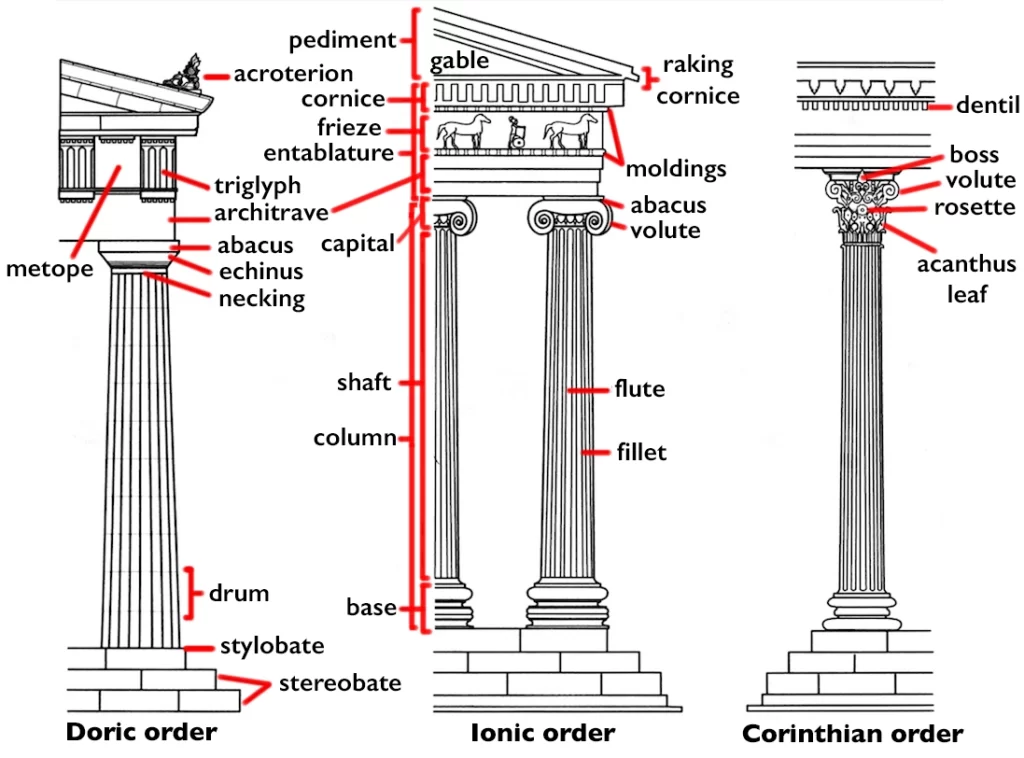
4. Use of Columns: Columns are a hallmark of classical architecture. They are vertical structural elements that provide support and visual rhythm. The columns are typically fluted (having parallel vertical grooves) and rest on a base. They support an entablature and are often used in porticos and colonnades.
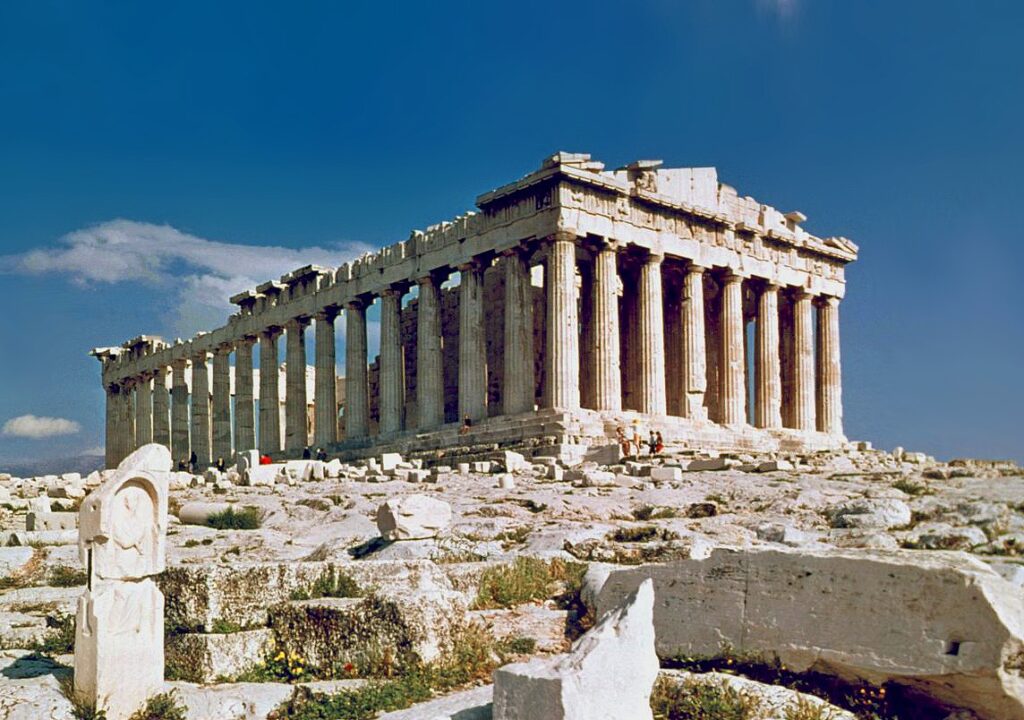
5. Arches and Vaults: Classical architecture utilizes arches and vaults as structural elements. Arches provide strength and allow for greater spans in buildings, while vaults are arched ceilings or roofs created by a series of arches.
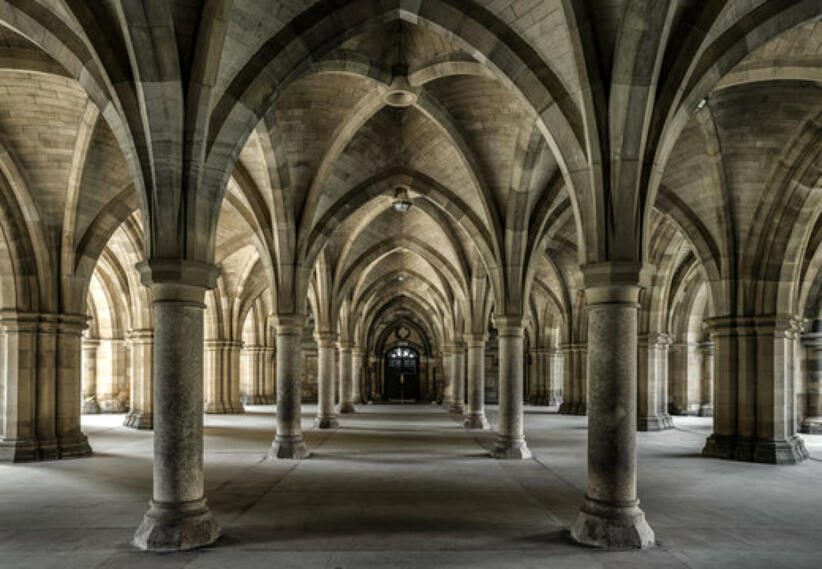
6. Symmetrical Facades: Classical architecture emphasizes symmetrical facades, with a central entrance and balanced arrangement of windows, doors, and decorative elements on either side. This creates a sense of order and harmony.
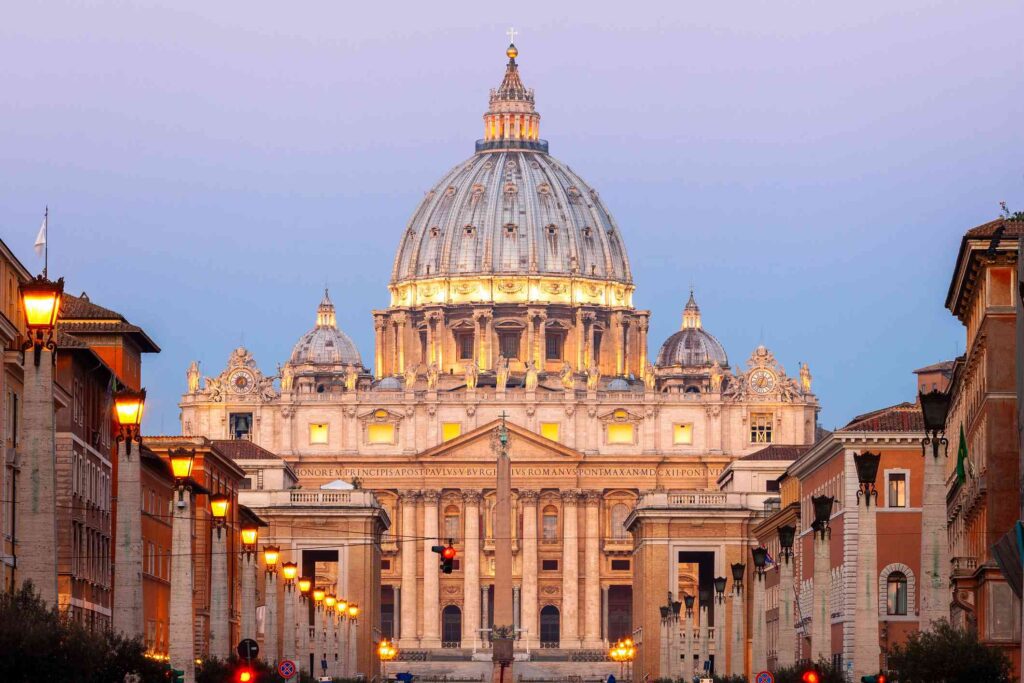
7. Classical Proportions: Classical architecture follows a set of proportional systems, such as the “Golden Ratio” and the “Modulor,” to achieve pleasing and balanced compositions. These systems ensure that elements relate harmoniously to each other and the overall building.
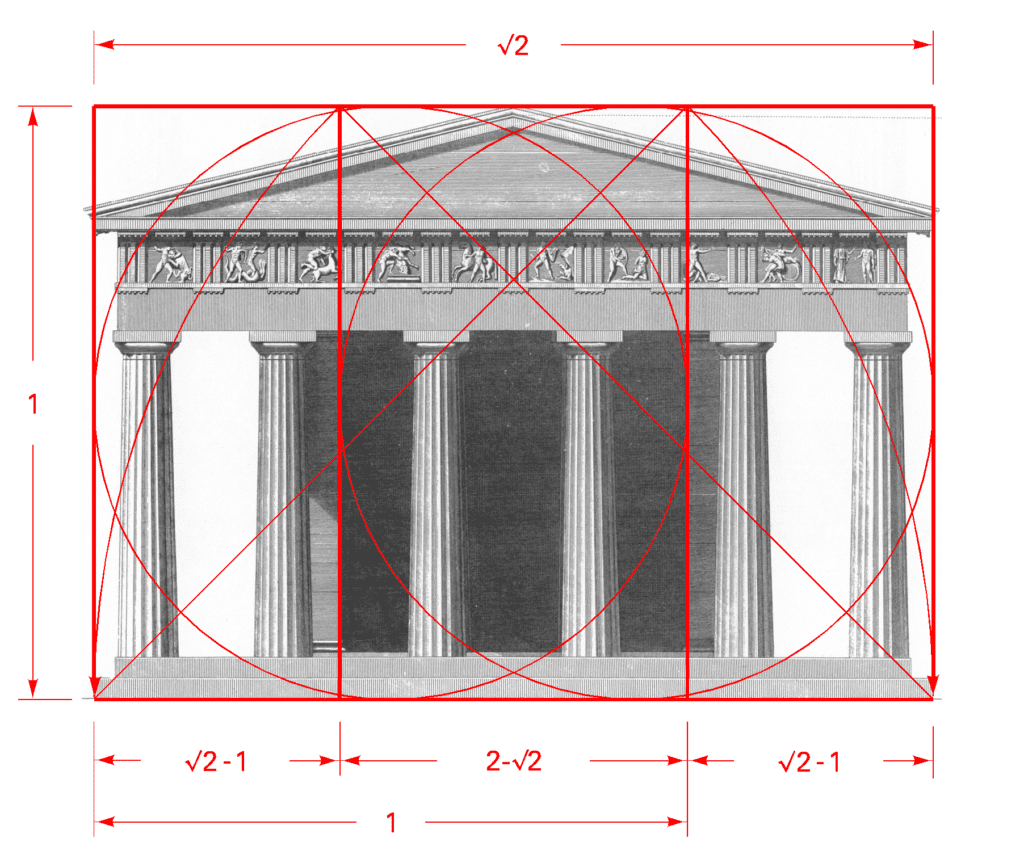
8. Use of Classical Motifs: Classical architecture incorporates decorative motifs from ancient Greek and Roman cultures, such as acanthus leaves, egg-and-dart patterns, rosettes, and meanders. These motifs can be found on columns, friezes, and other architectural elements.
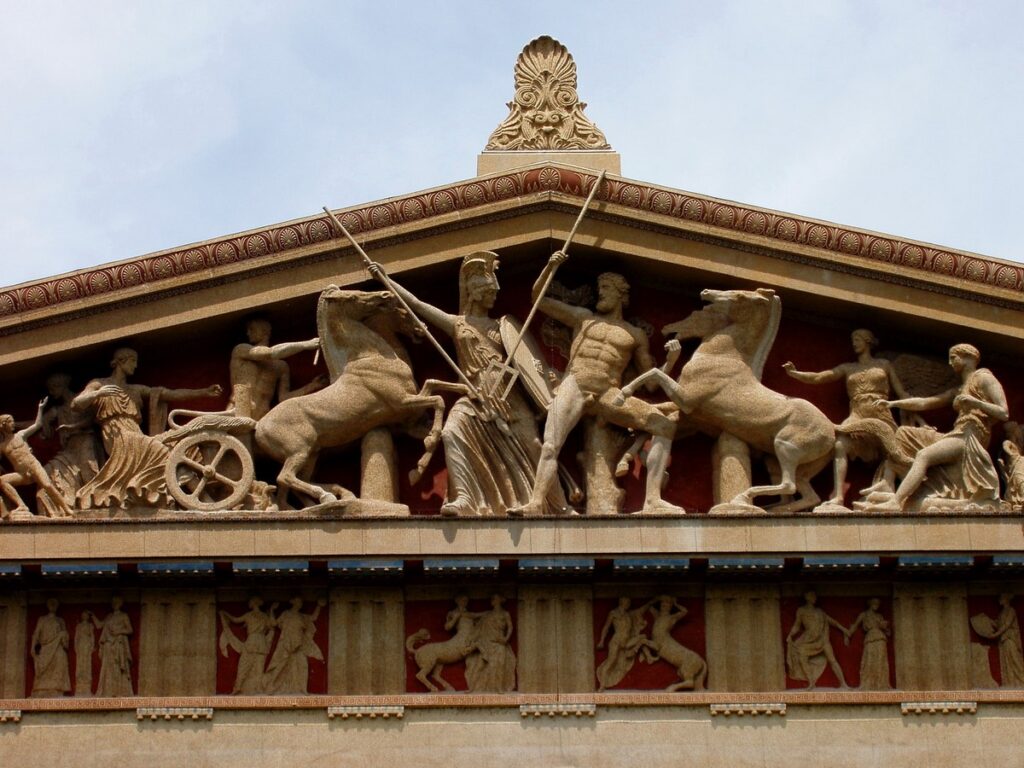
Classical architecture style has been widely influential throughout history and continues to be admired for its timeless beauty, rationality, and enduring appeal. It has shaped the design of numerous buildings, including government structures, museums, universities, and civic spaces, reflecting a sense of grandeur and cultural heritage.
In conclusion, classical architecture stands as a testament to the enduring beauty and influence of ancient Greek and Roman civilizations. Its emphasis on symmetry, proportion, and the use of classical orders and motifs has shaped Western architecture for centuries. The grandeur and elegance of classical architecture can be seen in a wide range of buildings, from majestic temples to stately government structures and cultural landmarks. Its timeless appeal continues to inspire architects and captivate admirers around the world, serving as a reminder of the rich architectural heritage that has shaped our built environment. Classical architecture’s legacy stands strong, bridging the gap between past and present, and reminding us of the profound impact of ancient civilizations on our architectural language and cultural identity.
GOTHIC ARCHITECTURE STYLE
Gothic architecture style emerged in Europe during the High and Late Middle Ages, from the 12th to the 16th century. It is characterized by its pointed arches, ribbed vaults, and flying buttresses. Here are the key features of Gothic architecture style:
1. Pointed Arches: Gothic architecture is defined by its extensive use of pointed arches. These arches, also known as ogival arches, are taller and more pointed than the rounded arches of earlier Romanesque architecture. Pointed arches distribute weight more efficiently, allowing for greater height and larger windows.

2. Ribbed Vaults: Gothic cathedrals and churches feature ribbed vaults. These vaults consist of a framework of ribs, which are arched or pointed, that intersect and create a network of structural support. Ribbed vaults add strength and allow for the creation of expansive, open interiors.

3. Flying Buttresses: One of the most recognizable features of Gothic architecture is the flying buttress. These exterior support structures consist of a buttress (an inclined, thick wall) that extends from the main structure to a pier or column. Flying buttresses transmit the weight of the vaulted ceilings and walls outward, relieving pressure and allowing for taller and more spacious interiors.

4. Vertical Emphasis: Gothic architecture is characterized by its verticality, aiming to reach the heavens. The design features elongated proportions, tall spires, and slender columns that draw the viewer’s gaze upward. This vertical emphasis is accentuated by the pointed arches and soaring vaults.

5. Stained Glass Windows: Gothic buildings are known for their extensive use of stained glass windows. These windows feature vibrant, colored glass arranged in intricate designs, often depicting religious narratives or scenes. Stained glass windows are an essential element of Gothic architecture, allowing the interiors to be illuminated with a mystical and ethereal quality.

6. Ornate Decoration: Gothic architecture is richly decorated with intricate stone carvings, known as tracery, adorning the facades, portals, and window surrounds. Decorative elements include delicate stone tracery patterns, foliage motifs, gargoyles, and sculpted figures of saints, angels, and mythical creatures.

7. Rose Windows: Rose windows are large, circular stained glass windows with intricate tracery radiating from a central point, resembling the petals of a rose. These windows are often located on the façades of Gothic cathedrals and serve as focal points of architectural and symbolic significance.

In conclusion, Gothic architecture stands as a remarkable testament to the ingenuity and artistic expression of the High and Late Middle Ages in Europe. Its distinctive features, such as pointed arches, ribbed vaults, flying buttresses, and stained glass windows, revolutionized architectural design and allowed for the creation of awe-inspiring structures that reached unprecedented heights. The vertical emphasis and ornate decoration of Gothic architecture created a sense of transcendence and spiritual elevation, reflecting the deep religious devotion of the time. The intricate tracery, gargoyles, and sculpted figures showcased the craftsmanship and attention to detail of the skilled artisans who brought these structures to life. The grandeur and ethereal beauty of Gothic cathedrals and churches continue to captivate and inspire admiration in the present day. Gothic architecture remains an enduring symbol of the medieval era, representing the cultural and architectural achievements of a significant period in European history.
RENAISSANCE ARCHITECTURE STYLE
Renaissance architecture style refers to the architectural movement that emerged in Europe during the Renaissance period, which spanned the 14th to the 17th century. It was a revival of the classical principles of ancient Greek and Roman architecture and marked a shift from the dominant Gothic style of the Middle Ages. Renaissance architecture is characterized by its symmetry, proportion, and harmonious design. Here are the key features of Renaissance architecture style:
1. Classical Influence: Renaissance architecture drew heavily from the architectural forms and principles of ancient Greece and Rome. It embraced the classical orders, such as the Doric, Ionic, and Corinthian, and incorporated elements like columns, pilasters, pediments, and entablatures.

2. Symmetry and Proportion: Renaissance buildings exhibit a strong emphasis on symmetry and proportion. Facades are often perfectly balanced, with a central axis and mirrored elements on either side. Proportional systems, such as the “Golden Ratio” or the use of mathematical ratios, were employed to achieve pleasing and harmonious compositions.
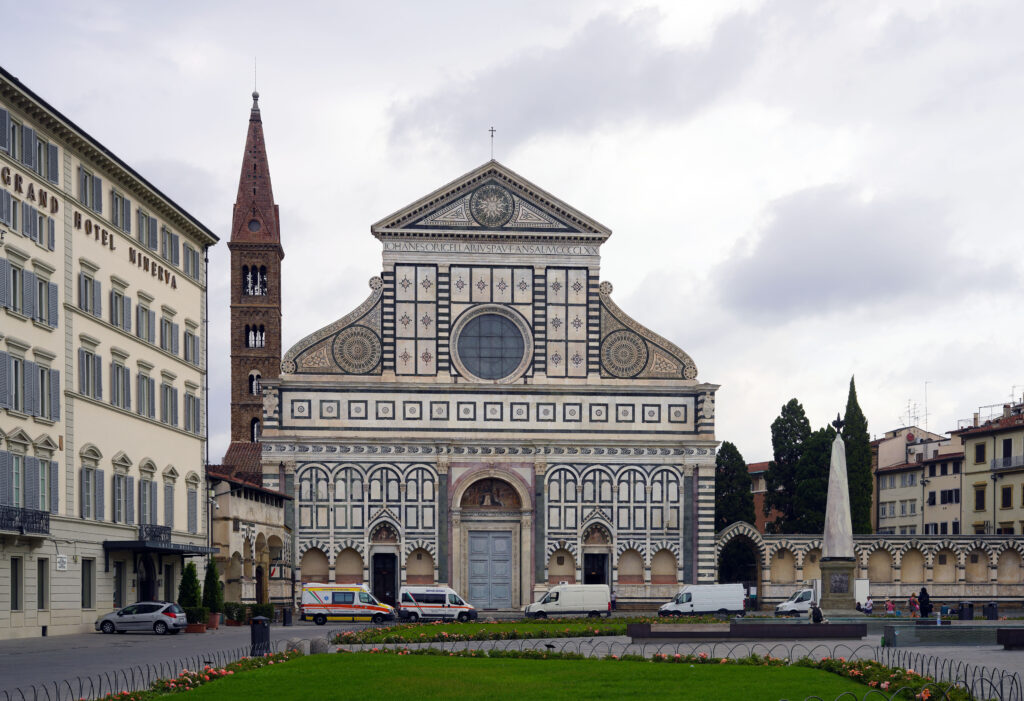
3. Humanism and Idealism: Renaissance architecture reflects the humanist philosophy of the time, which placed great value on the achievements of the individual. Buildings were designed to reflect idealized proportions and embody the pursuit of beauty, balance, and rationality.

4. Classical Orders and Pilasters: Renaissance architecture features the use of classical orders and pilasters. Columns and pilasters are employed for both decorative and structural purposes, supporting entablatures and defining the vertical elements of the building façade.
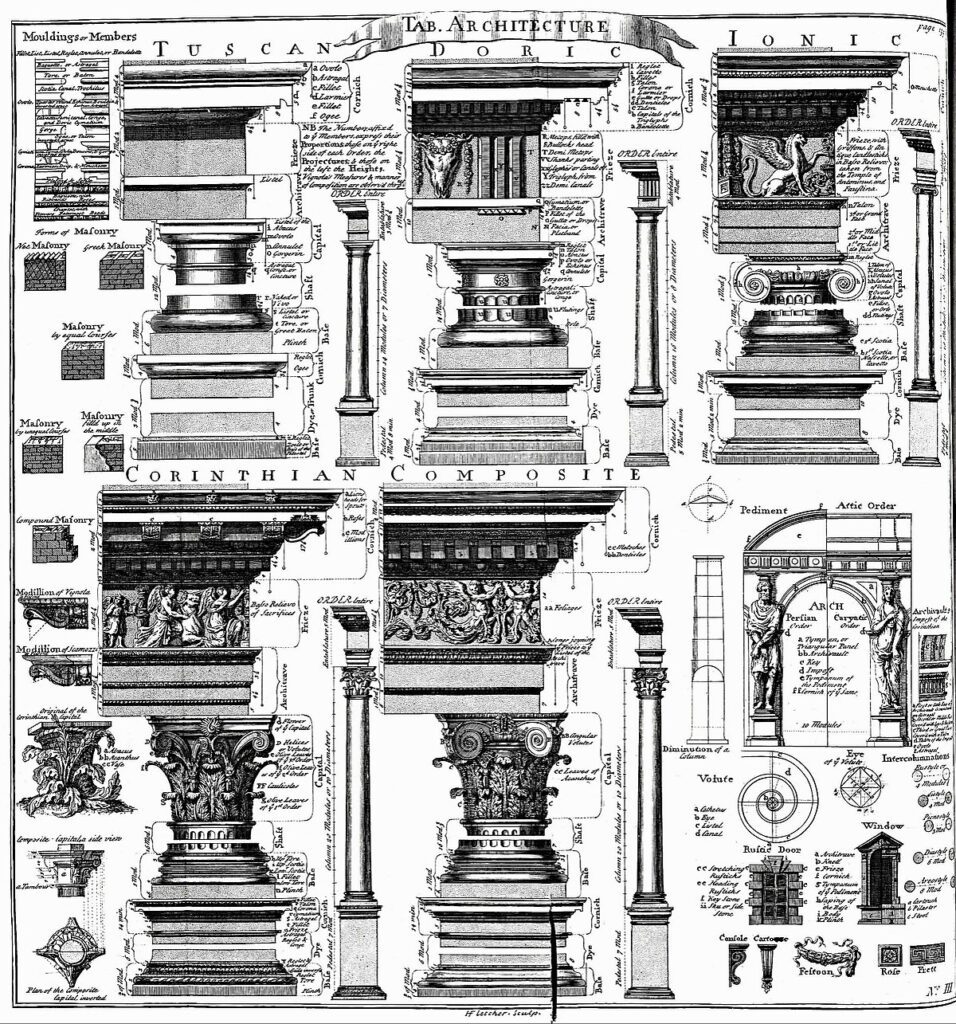
5. Classical Elements and Ornamentation: Renaissance architecture incorporates decorative elements inspired by classical antiquity. These include arches, niches, balustrades, coffered ceilings, friezes with relief sculptures, and decorative motifs such as acanthus leaves and classical figures.

6. Centralized and Domed Buildings: Renaissance architects developed a fascination for centralized and domed structures. Inspired by the Roman Pantheon, they created buildings with central plans, such as churches and palaces, featuring large domes as a prominent architectural feature.

7. Use of Perspective and Illusion: Renaissance architecture embraced the principles of linear perspective, creating a sense of depth and spatial illusion in facades, courtyards, and interiors. This was achieved through the use of orthogonal lines and the manipulation of proportions to create a realistic representation of space.

8. Classical Architectural Treatises: Renaissance architects studied and documented classical architectural treatises, such as those by Vitruvius, Serlio, and Palladio. These texts provided guidelines and theoretical foundations for the design and construction of buildings, influencing the principles of Renaissance architecture.

Notable examples of Renaissance architecture include the works of Andrea Palladio in Italy, such as the Villa Rotonda, and the architectural achievements of the High Renaissance period in Florence and Rome, including the dome of Florence Cathedral by Filippo Brunelleschi and St. Peter’s Basilica in Vatican City by Michelangelo.
In conclusion, Renaissance architecture stands as a remarkable testament to the revival of classical ideals and the pursuit of beauty, balance, and rationality during the Renaissance period. Inspired by the architectural forms and principles of ancient Greece and Rome, Renaissance architects embraced symmetry, proportion, and the classical orders to create harmonious and visually pleasing buildings. The influence of humanism and idealism can be seen in the emphasis on individual achievement and the pursuit of perfection in architectural design. Renaissance architecture incorporated a rich array of classical elements and ornamentation, from columns and pilasters to arches and coffered ceilings, adorned with decorative motifs and relief sculptures. The fascination with centralized and domed structures, as well as the exploration of linear perspective and illusion, added depth and grandeur to Renaissance buildings. The study of classical architectural treatises provided a theoretical foundation and guidelines for Renaissance architects, shaping their design principles and techniques. The works of renowned architects such as Andrea Palladio, Filippo Brunelleschi, and Michelangelo exemplify the achievements of Renaissance architecture, with iconic structures that continue to inspire admiration and awe. Renaissance architecture not only marked a significant departure from the Gothic style of the Middle Ages but also set the stage for the architectural developments that followed, leaving an indelible mark on the built environment and the history of Western architecture.
BAROQUE ARCHITECTURE STYLE
Baroque architecture style emerged in Europe in the 17th century as a response to the Renaissance and Mannerist styles that preceded it. It is characterized by its dramatic and ornate design, dynamic shapes, and the use of light and shadow to create theatrical effects. Baroque architecture is often associated with the Catholic Counter-Reformation and the grandeur of absolute monarchies. Here are the key features of Baroque architecture style:
1. Dramatic and Curvaceous Forms: Baroque architecture is known for its dynamic and flamboyant forms. Buildings feature sweeping curves, undulating facades, and dramatic gestures that create a sense of movement and energy. This departure from the more restrained and symmetrical Renaissance style is intended to evoke emotions and create a sense of awe.

2. Ornate Decoration: Baroque architecture is characterized by lavish ornamentation. Facades are adorned with intricate sculptures, reliefs, and decorative elements such as scrolls, shells, and foliage motifs. Elaborate stucco work and gilded accents are also common features, adding a sense of opulence and luxury.

3. Use of Light and Shadow: Baroque architecture makes extensive use of light and shadow to enhance the dramatic effect. Buildings often feature contrasting light and dark areas, created through techniques such as chiaroscuro (contrasting light and shadow) and the use of hidden lighting sources to create a play of light.

4. Dynamic Interior Spaces: Baroque buildings often feature expansive and theatrical interiors. Grand staircases, large central halls, and domed ceilings create a sense of grandeur and spectacle. The interiors are adorned with elaborate frescoes, murals, and intricate detailing on walls and ceilings.

5. Church Architecture: Baroque architecture flourished in the context of the Catholic Counter-Reformation, and many of its most prominent examples are churches and religious buildings. Baroque churches often feature dramatic facades, soaring domes, and ornate interiors designed to inspire a sense of spiritual awe.

6. Monumental Facades: Baroque architecture places great emphasis on the facade as a means of creating a visual impact. Facades are often multi-storied, with complex compositions, decorative motifs, and the use of convex and concave curves to create a sense of depth and movement.
7. Integration of Sculpture and Architecture: Baroque architecture integrates sculpture and architecture, blurring the lines between the two disciplines. Sculptural elements are often incorporated into the facades, such as statues and relief sculptures that interact with the architectural forms.

8. Urban Planning and Landscaping: Baroque architecture extended beyond individual buildings to encompass urban planning and landscaping. It emphasized the creation of grand squares, fountains, and expansive gardens, often with axial views and symmetrical arrangements.
Baroque architecture emerged in the 17th century as a response to Renaissance and Mannerist styles. It is characterized by dramatic and ornate designs, curvaceous forms, lavish decoration, and the use of light and shadow. Baroque architecture is closely associated with the Catholic Counter-Reformation and absolute monarchies. It is often seen in churches and palaces, featuring grand facades, elaborate interiors, and integration of sculpture with architecture. Baroque architecture also extended to urban planning and landscaping, creating symmetrical squares, fountains, and gardens. Overall, Baroque architecture represents the opulence and theatricality of the 17th century, captivating viewers with its extravagant beauty.
NEOCLASSICAL ARCHITECTURE STYLE
Neoclassical architecture style emerged in the late 18th century as a revival of classical Greek and Roman architecture. It was a reaction against the excesses of the Baroque and Rococo styles, seeking to reintroduce the simplicity, symmetry, and clarity of classical design. Neoclassical architecture became popular during the Enlightenment era and was associated with ideals of reason, order, and democracy. Here are the key features of Neoclassical architecture style:
1. Classical Influence: Neoclassical architecture draws inspiration from ancient Greek and Roman architecture. It emphasizes the use of classical orders, such as Doric, Ionic, and Corinthian, as well as architectural elements like columns, pediments, and entablatures. The goal is to recreate the architectural vocabulary and forms of antiquity.

2. Symmetry and Balance: Neoclassical buildings are characterized by a strong sense of symmetry and balance. Facades are often organized around a central axis, with elements mirroring each other to create a harmonious composition. This reflects the classical ideals of order and proportion.

3. Simple and Elegant Design: Neoclassical architecture is known for its clean lines, simple forms, and restrained ornamentation. It seeks to avoid excessive decoration and flamboyance, instead focusing on the beauty of proportion, geometry, and the purity of classical design.

4. Pediments and Porticos: Neoclassical buildings often feature triangular pediments on the facades, reminiscent of ancient Greek temples. These pediments are supported by columns or pilasters and create a sense of grandeur and monumentality. Porticos, or covered entrance areas supported by columns, are also common in Neoclassical architecture.

5. Classical Motifs and Detailing: Neoclassical architecture incorporates classical motifs and decorative elements, such as Greek key patterns, rosettes, acanthus leaves, and friezes with relief sculptures. These details are usually restrained and used sparingly to enhance the overall elegance and clarity of the design.

6. Use of Classical Orders: Neoclassical buildings often feature columns and pilasters in the classical orders. The choice of order depends on the desired aesthetic and the function of the building. Columns are typically smooth and unadorned, with capitals that reflect the distinctive characteristics of each order.
7. Regular Fenestration: Neoclassical architecture favors regular and evenly spaced windows, often with simple rectangular or square frames. The windows are typically tall and narrow, contributing to the verticality of the design.
8. White or Light-Colored Facades: Neoclassical buildings are often characterized by white or light-colored facades. This choice of color reflects the ancient Greek and Roman preference for white marble and creates a sense of purity and timelessness.

Notable examples of Neoclassical architecture include the Parthenon in Athens, the United States Capitol in Washington, D.C., and the Pantheon in Paris. Neoclassical architecture style embodies a return to classical ideals and a rejection of the ornate and extravagant styles that preceded it. It represents a celebration of reason, simplicity, and the enduring beauty of ancient architectural traditions.
ART NOUVEAU
Art Nouveau was an artistic and design movement that emerged in the late 19th century and flourished in the early 20th century. It is characterized by its organic, flowing forms, intricate patterns, and a celebration of nature. Art Nouveau sought to break away from historical revival styles and embrace a new, modern aesthetic. Here are the key features of the Art Nouveau style:
1. Organic and Curvilinear Forms: Art Nouveau is known for its sinuous and flowing lines inspired by nature. It incorporates curvilinear and asymmetrical forms, often resembling plant tendrils, waves, and other natural motifs. The aim was to create a sense of movement and fluidity in the design.

2. Nature and Botanical Motifs: Art Nouveau embraced the beauty of nature, and its designs often feature botanical motifs, such as flowers, leaves, vines, and flowing water. These organic elements are integrated into architectural details, furniture, and decorative arts.

3. Whiplash and Swooping Lines: Art Nouveau designers utilized “whiplash” lines, characterized by their energetic and elongated curves that mimic the bending and twisting of plants. These lines can be found in architectural elements, furniture, and decorative objects.

4. Stylized and Symbolic Forms: Art Nouveau artists often stylized and abstracted natural forms to create symbolic representations. They transformed flowers, insects, and other organic elements into decorative patterns with a personal, artistic interpretation.

5. Elaborate Ornamentation: Art Nouveau embraced ornate and intricate detailing. It featured delicate and intricate patterns, often achieved through techniques such as etching, carving, and inlay work. Decorative elements such as stained glass, ceramics, and metalwork were prominent in Art Nouveau designs.

6. Integration of Art and Craftsmanship: Art Nouveau aimed to break down the barriers between art and craft. It emphasized the integration of artistic expression with craftsmanship, combining traditional techniques with innovative design. This approach led to the creation of unique and highly crafted objects.

7. Use of New Materials and Technologies: Art Nouveau embraced the use of new materials and technologies of the time, such as iron, glass, and reinforced concrete. It explored the potential of these materials to create innovative forms and structures.
8. Total Design Concept: Art Nouveau sought to create a cohesive and immersive aesthetic experience. It applied its design principles to all aspects of art and everyday life, including architecture, interior design, furniture, textiles, jewelry, and graphic arts. The goal was to create a harmonious and unified environment.
Notable examples of Art Nouveau architecture and design include the Hector Guimard’s entrances of the Paris Métro, the works of Antoni Gaudí in Barcelona (such as the Sagrada Família), and the decorative arts of artists like Alphonse Mucha and Émile Gallé.
Art Nouveau style marked a significant departure from the traditional and historical styles of the time, embracing a fresh and innovative aesthetic that celebrated nature and craftsmanship. It was a forerunner to the modernist movements that followed, influencing the development of 20th-century design.
DECONSTRUCTIVE ARCHITECTURE
Deconstructivism is an architectural style that emerged in the late 20th century as a response to the rigid principles of modernism. It is characterized by its fragmented and distorted forms, unconventional geometries, and a sense of disorientation and unpredictability. Deconstructivist architecture seeks to challenge traditional notions of order, coherence, and stability. Here are the key features of Deconstructivism architecture style:
1. Fragmentation and Disruption: Deconstructivist buildings often appear fragmented or deconstructed, with elements that seem to be dislocated or disconnected. Traditional architectural elements, such as walls, floors, and ceilings, are intentionally fragmented and reassembled in unconventional ways, creating a sense of disorientation and unpredictability.

2. Non-Euclidean Geometries: Deconstructivism employs complex geometries that defy conventional Euclidean geometry. Buildings feature irregular and non-rectilinear forms, distorted angles, and skewed perspectives. These geometric distortions challenge the viewer’s perception and create a sense of dynamism and instability.

3. Contrasting Materials: Deconstructivist architecture often utilizes a combination of different materials, textures, and finishes to create visual contrast and tension. Common materials include steel, glass, concrete, and sometimes exposed structural elements. The juxtaposition of these materials enhances the sense of fragmentation and discord.

4. Expression of Structure: Deconstructivist buildings often express their structural systems and elements as an integral part of the design. Structural elements such as beams, columns, and joints are exposed, highlighting the building’s construction process and emphasizing the interplay between form and function.

5. Absence of Hierarchy: Deconstructivism challenges the traditional hierarchy of architectural elements. Instead of following a clear hierarchy where one element dominates the others, Deconstructivist buildings tend to feature multiple focal points and a more egalitarian distribution of attention across different parts of the structure.

6. Emphasis on Process and Concept: Deconstructivist architecture emphasizes the design process and the conceptual ideas behind the building. The focus is on exploring and pushing the boundaries of architectural form and meaning, often incorporating philosophical or artistic references.
7. Dynamic and Unpredictable Spaces: Deconstructivist buildings often create dynamic and unexpected spatial experiences. Spaces can be fragmented, distorted, or non-linear, challenging the perception of traditional architectural spaces. The aim is to evoke a sense of exploration and surprise for the occupants.

8. Contextual Response: Despite its unconventional forms, Deconstructivist architecture often responds to the surrounding context or site conditions. It may contrast or complement existing architectural styles, engage with the urban fabric, or establish a dialogue with the natural environment.
Notable examples of Deconstructivist architecture include the Guggenheim Museum Bilbao by Frank Gehry, the Walt Disney Concert Hall in Los Angeles by Frank Gehry, and the Vitra Design Museum in Germany by Frank Gehry and Zaha Hadid.
Deconstructivism represents a departure from traditional architectural norms, challenging the principles of order, stability, and hierarchy. It celebrates experimentation, fragmentation, and a sense of movement, offering a provocative and thought-provoking approach to architectural design.
BRUTALISM ARCHITECTURE STYLE
Brutalism is an architectural style that emerged in the mid-20th century and gained popularity from the 1950s to the 1970s. It is characterized by its raw, exposed, and often rough concrete construction, with an emphasis on functionality and a rejection of ornamentation. Brutalist buildings often have a bold and monumental presence, showcasing the structural elements and expressing an honesty of materials. Here are the key features of Brutalism architecture style:
1. Exposed Concrete: Brutalist architecture is known for its extensive use of exposed concrete as the primary construction material. The concrete is often left unfinished, revealing the texture, patterns, and marks left by the formwork. This raw aesthetic highlights the materiality and strength of concrete.

2. Monumental Scale: Brutalist buildings are typically large-scale and imposing. They often have a sense of massiveness and monumentality, with strong, solid volumes that dominate the surrounding landscape. The scale of Brutalist architecture aims to create a strong presence and make a statement.

3. Geometric Forms and Bold Shapes: Brutalist designs feature bold and geometric shapes. Buildings may have angular, blocky forms or feature repetitive, modular elements. The emphasis is on strong, clean lines and geometric compositions that create a sense of order and simplicity.

4. Functionality and Structural Expression: Brutalist architecture prioritizes functionality and the expression of the building’s structural systems. Structural elements such as columns, beams, and joints are often exposed and celebrated as integral design elements. This transparency showcases the building’s construction process and its inherent strength.

5. Minimal Ornamentation: Brutalism rejects excessive ornamentation and decorative elements. The focus is on the purity of form and the expression of the building’s function and structure. Any ornamentation is typically minimal and integrated into the overall design, serving a functional or structural purpose.
6. Emphasis on Natural Light and Open Space: Brutalist buildings often incorporate large windows, open spaces, and courtyards to maximize natural light and create a sense of openness. The contrast between the solid concrete elements and the light-filled spaces adds visual interest and enhances the overall experience.

7. Urban Integration: Brutalist architecture often engages with its urban context and the surrounding environment. It may respond to the scale and materials of neighboring buildings or contribute to the overall urban fabric. Some Brutalist structures incorporate public spaces or plazas, aiming to foster social interaction and community engagement.
8. Controversial Reputation: Brutalism has a polarizing reputation, with some people appreciating its boldness, honesty, and sense of authenticity, while others find its raw aesthetics and imposing presence unappealing. The style has faced criticism for its perceived harshness, lack of warmth, and sometimes associated with urban decay.
Notable examples of Brutalist architecture include the Barbican Estate in London, the National Theatre in London, the Boston City Hall, and the Habitat 67 in Montreal.
Brutalism represents a departure from more traditional architectural styles, embracing a robust and utilitarian aesthetic. It reflects the ideals of the Modernist movement, emphasizing functionality, honesty of materials, and the expression of structure. While controversial, Brutalism has left a significant mark on the architectural landscape and continues to provoke discussion and debate.
POSTMODERNISM ARCHITECTURAL STYLE
Postmodernism in architecture is an architectural style and movement that emerged in the late 20th century as a reaction against the rigidity and uniformity of modernism. It is characterized by its eclectic and playful approach to design, drawing inspiration from various architectural traditions, historical styles, and popular culture. Postmodern architecture often incorporates irony, humor, and a self-conscious awareness of architectural history. Here are the key features of Postmodernism architecture style:
1. Eclectic and Hybrid Forms: Postmodern architecture embraces a mix of architectural forms, elements, and motifs from different styles and periods. It often combines traditional and contemporary elements in unexpected and unconventional ways. Eclectic combinations of shapes, colors, and materials are common in postmodern designs.

2. Historical References: Postmodern architecture incorporates historical references and allusions, often with a sense of irony and parody. It may reinterpret, borrow, or recontextualize elements from past architectural styles, such as classical columns, arches, or decorative ornamentation. These historical references are used in a playful and non-conventional manner.
3. Playfulness and Wit: Postmodern architecture often incorporates playful and whimsical elements, challenging the seriousness and austerity of modernism. It may feature unexpected forms, exaggerated proportions, decorative motifs, and vibrant colors. Postmodern buildings aim to engage the viewer and evoke a sense of delight or surprise.
4. Fragmentation and Collage: Postmodern architecture embraces fragmentation and collage as design strategies. Buildings may appear as assembled fragments or composed of various elements, creating a sense of visual complexity and juxtaposition. This fragmented aesthetic challenges the notion of a unified and coherent architectural form.

5. Contextual Response: Postmodern architecture often responds to its context, both physical and cultural. It may reflect or comment on the surrounding built environment, incorporating elements that complement or contrast with neighboring structures. Postmodern buildings aim to establish a dialogue with their surroundings and engage with the local culture.
6. Non-linear Spaces and Experiences: Postmodern architecture often creates non-linear spatial experiences, challenging the conventional organization of spaces. Buildings may feature unconventional circulation patterns, unexpected viewpoints, and a variety of scales and proportions. The aim is to create dynamic and experiential spaces that engage the occupants.
7. Emphasis on Symbolism and Significance: Postmodern architecture often incorporates symbolism and signification. Buildings may incorporate symbolic elements or forms that convey meaning or represent specific ideas. This emphasis on symbolism aims to create a richer and more meaningful architectural experience.

8. Embracing Technology: Postmodernism embraces technological advancements and incorporates them into the design. This can be seen through the use of new construction materials, innovative building techniques, and the integration of technology into the building’s functions and systems.
Notable examples of Postmodern architecture include the Piazza d’Italia in New Orleans by Charles Moore, the Portland Building in Oregon by Michael Graves, and the AT&T Building (now Sony Tower) in New York City by Philip Johnson.
Postmodern architecture represents a departure from the strict principles of modernism, embracing a more inclusive and eclectic approach to design. It celebrates diversity, creativity, and the reinterpretation of architectural history. Postmodernism challenged the notion of a single dominant architectural style and encouraged architects to explore a wider range of influences and expressions.
SUSTAINABLE ARCHITECTURE STYLE
Sustainable architecture, also known as green architecture or eco-friendly architecture, is a design approach that aims to minimize the negative environmental impact of buildings while maximizing their energy efficiency, resource conservation, and occupant comfort. It encompasses a range of strategies and principles that promote sustainability throughout the entire lifecycle of a building. Here are the key features and principles of sustainable architecture:
1. Energy Efficiency: Sustainable architecture focuses on reducing energy consumption through various design strategies. This includes optimizing building orientation to maximize natural lighting and passive solar heating, using energy-efficient lighting systems and appliances, and integrating renewable energy sources such as solar panels or wind turbines.

2. Sustainable Materials: The choice of materials in sustainable architecture is crucial. It involves using renewable, locally sourced, and recycled materials that have a lower environmental impact. These materials may include sustainably harvested wood, recycled steel, low VOC (volatile organic compound) paints, and eco-friendly insulation materials.
3. Efficient Water Use: Sustainable architecture incorporates water-saving techniques to reduce water consumption. This includes the use of low-flow fixtures, rainwater harvesting systems for irrigation, and graywater recycling systems to reuse water for non-potable purposes.
4. Site Selection and Design: Sustainable architecture considers the site’s environmental factors, such as climate, topography, and vegetation, to minimize the building’s impact on its surroundings. This may involve preserving existing vegetation, promoting biodiversity, and managing stormwater runoff through the use of green infrastructure.
5. Passive Design Strategies: Passive design techniques aim to optimize natural ventilation, daylighting, and thermal comfort without relying on mechanical systems. This includes strategic placement of windows for cross ventilation, shading devices to reduce heat gain, and the use of thermal mass to regulate indoor temperatures.

6. Efficient Building Systems: Sustainable architecture integrates energy-efficient and environmentally friendly systems into the building’s design. This includes efficient HVAC (heating, ventilation, and air conditioning) systems, smart building controls for optimized energy management, and advanced water management systems.
7. Indoor Environmental Quality: Sustainable architecture prioritizes the health and well-being of occupants by ensuring good indoor air quality, thermal comfort, and acoustics. This involves proper ventilation, the use of low-emission materials, and the incorporation of daylight and views to create a pleasant and productive indoor environment.

8. Lifecycle Considerations: Sustainable architecture takes into account the entire lifecycle of a building, including its construction, operation, and eventual demolition or adaptive reuse. This involves considering the environmental impact of construction materials, designing for flexibility and adaptability, and promoting the recycling and reuse of building components.
Sustainable architecture aims to create buildings that are environmentally responsible, energy-efficient, and healthy for occupants. It recognizes the interdependence between the built environment and the natural world, seeking to minimize resource consumption, reduce greenhouse gas emissions, and promote sustainable living. By integrating sustainable design principles, architects play a crucial role in creating a more sustainable and resilient future.
MODERN ARCHITECTURE STYLE
Modern architecture, also known as the International Style, emerged in the early 20th century and became dominant from the 1920s to the 1970s. It is characterized by its emphasis on functionality, simplicity, and the use of new construction materials and technologies. Modern architecture sought to break away from historical architectural styles and traditions and embrace a new, forward-looking approach to design. Here are the key features of modern architecture style:
1. Functionalism: Modern architecture prioritizes functionality and efficiency. Buildings are designed with a focus on their intended purpose and the needs of the occupants. The form follows function, with an emphasis on clear and rational organization of spaces to facilitate their purpose.
2. Simplified Forms: Modern architecture features clean, simple, and geometric forms. It embraces straight lines, right angles, and rectangular shapes. Ornamentation is minimal, and any decorative elements are integrated into the overall design rather than applied superficially.

3. Open Floor Plans: Modern architecture promotes open and flexible floor plans that allow for fluid movement and adaptable use of space. Walls are often non-load bearing, allowing for greater freedom in rearranging the interior layout. Large windows and open spaces enhance the sense of openness and connection to the outdoors.
4. Use of New Materials: Modern architecture embraces the use of new materials and construction techniques of the time. Steel, reinforced concrete, and glass are commonly used to create lighter and more flexible structures. These materials allow for larger spans, thinner walls, and larger windows, enabling new architectural possibilities.
5. Integration of Technology: Modern architecture incorporates technological advancements into its design. This includes innovations in construction techniques, mechanical systems, and building materials. Modern buildings often feature advanced HVAC systems, electrical wiring, and other technological amenities.

6. Emphasis on Horizontality: Modern architecture often emphasizes horizontal lines and low-pitched roofs. Buildings tend to have a horizontal emphasis to create a sense of stability and integration with the surrounding landscape.
7. Connection to Nature: While modern architecture is often associated with urban environments, it also seeks to establish a connection with nature. Buildings may incorporate large windows, outdoor terraces, and landscaped areas to bring natural light, ventilation, and a sense of harmony with the environment.
8. Rejection of Ornamentation: Modern architecture rejects excessive ornamentation and decoration. The focus is on simplicity, cleanliness, and the intrinsic beauty of materials and form. Ornamentation, if used, is usually minimal and serves a functional or structural purpose.
Notable examples of modern architecture include the Bauhaus building in Germany by Walter Gropius, the Villa Savoye in France by Le Corbusier, and the Seagram Building in New York City by Ludwig Mies van der Rohe. Modern architecture represents a significant shift in architectural thinking, embracing the principles of functionality, simplicity, and the integration of new technologies. It laid the foundation for the development of subsequent architectural styles and continues to influence contemporary design.
POSTMODERN ARCHITECTURAL STYLE
Postmodern architecture is an architectural style that emerged in the late 20th century as a reaction against the rigidity and uniformity of modernism. It is characterized by its eclectic and playful approach to design, drawing inspiration from various architectural traditions, historical styles, and popular culture. Postmodern architecture often incorporates irony, humor, and a self-conscious awareness of architectural history. Here are the key features and principles of postmodern architecture:
1. Historical References: Postmodern architecture incorporates historical references and allusions, often with a sense of irony and parody. It may reinterpret, borrow, or recon textualize elements from past architectural styles, such as classical columns, arches, or decorative ornamentation. These historical references are used in a playful and non-conventional manner.

2. Eclectic and Hybrid Forms: Postmodern architecture embraces a mix of architectural forms, elements, and motifs from different styles and periods. It often combines traditional and contemporary elements in unexpected and unconventional ways. Eclectic combinations of shapes, colors, and materials are common in postmodern designs.
3. Playfulness and Wit: Postmodern architecture often incorporates playful and whimsical elements, challenging the seriousness and austerity of modernism. It may feature unexpected forms, exaggerated proportions, decorative motifs, and vibrant colors. Postmodern buildings aim to engage the viewer and evoke a sense of delight or surprise.

4. Fragmentation and Collage: Postmodern architecture embraces fragmentation and collage as design strategies. Buildings may appear as assembled fragments or composed of various elements, creating a sense of visual complexity and juxtaposition. This fragmented aesthetic challenges the notion of a unified and coherent architectural form.
5. Contextual Response: Postmodern architecture often responds to its context, both physical and cultural. It may reflect or comment on the surrounding built environment, incorporating elements that complement or contrast with neighboring structures. Postmodern buildings aim to establish a dialogue with their surroundings and engage with the local culture.

6. Irony and Self-Preferentiality: Postmodern architecture exhibits a self-conscious awareness of its own construction and architectural history. It may incorporate irony, humor, and cultural references into its design. Postmodern buildings often challenge the conventional notions of taste and aesthetics.
7. Embracing Technology: Postmodernism embraces technological advancements and incorporates them into the design. This can be seen through the use of new construction materials, innovative building techniques, and the integration of technology into the building’s functions and systems.

8. Emphasis on Symbolism and Significance: Postmodern architecture often incorporates symbolism and signification. Buildings may incorporate symbolic elements or forms that convey meaning or represent specific ideas. This emphasis on symbolism aims to create a richer and more meaningful architectural experience.
Notable examples of postmodern architecture include the Piazza d’Italia in New Orleans by Charles Moore, the Portland Building in Oregon by Michael Graves, and the AT&T Building (now Sony Tower) in New York City by Philip Johnson. Postmodern architecture represents a departure from the strict principles of modernism, embracing a more inclusive and eclectic approach to design. It celebrates diversity, creativity, and the reinterpretation of architectural history. Postmodernism challenged the notion of a single dominant architectural style and encouraged architects to explore a wider range of influences and expressions.
CONTEMPORARY ARCHITECTURE
Contemporary architecture, also known as modern contemporary or simply “contemporary,” refers to the architectural style and design approach of the present time. It is characterized by its diverse and dynamic nature, as it reflects the current trends, technologies, and cultural influences. Contemporary architecture does not adhere to a specific set of rules or aesthetic principles, but rather encompasses a wide range of styles and approaches that are constantly evolving. Here are some key characteristics of contemporary architecture style:
1. Innovation and Experimentation: Contemporary architecture emphasizes innovation and pushes the boundaries of traditional design conventions. Architects often experiment with new materials, construction techniques, and technologies to create unique and cutting-edge structures.

2. Functionality and Efficiency: Contemporary architecture places a strong emphasis on functionality, efficiency, and sustainability. Buildings are designed to serve their intended purpose effectively, with careful consideration of spatial organization, flexibility, and energy efficiency.
3. Simplicity and Minimalism: Contemporary architecture often embraces a minimalist aesthetic, characterized by clean lines, simple forms, and an emphasis on open spaces. Clutter is minimized, and ornamentation is often restrained, allowing the focus to be on the essential elements of the design.
4. Integration of Indoor and Outdoor Spaces: Contemporary architecture seeks to establish a strong connection between indoor and outdoor spaces. It often incorporates large windows, sliding glass doors, and outdoor living areas to blur the boundaries between the interior and exterior, creating a seamless flow between the two.
5. Sustainable Design: Sustainability is a key consideration in contemporary architecture. Buildings are designed to minimize environmental impact through energy-efficient systems, the use of sustainable materials, passive design strategies, and the incorporation of renewable energy sources.
6. Contextual Responsiveness: Contemporary architecture responds to the specific context in which it is situated. Whether it is a natural landscape or an urban setting, contemporary buildings seek to harmonize with their surroundings, taking into account the site’s characteristics, climate, and cultural context.
7. Adaptive Reuse and Renovation: Contemporary architecture often embraces adaptive reuse and renovation projects, transforming existing structures into new, functional spaces. This approach promotes sustainability by reducing the need for new construction and preserving architectural heritage.
8. Embracing Technology: Contemporary architecture integrates the latest technologies into the design and construction process. This includes advanced building systems, smart home technology, digital fabrication techniques, and innovative materials to enhance functionality, comfort, and efficiency.
Contemporary architecture is diverse and ever-evolving, reflecting the dynamic nature of society, culture, and technology. It encourages architects to explore new ideas, experiment with different materials and forms, and respond to the evolving needs and aspirations of individuals and communities. As a result, contemporary architecture is characterized by its creativity, adaptability, and commitment to sustainability.
These are just a few examples of architectural styles, and there are many more that have developed over time and continue to evolve. Each style represents a unique expression of human creativity, cultural identity, and the aspirations of the time in which it was created.
